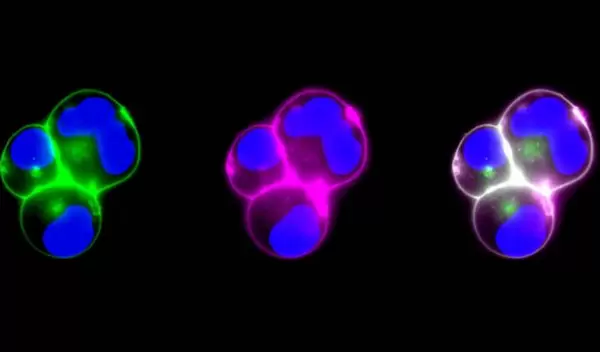
'Plug-and-play' nanoparticles could make it easier to tackle various biological targets
Researchers at UC San Diego have developed modular nanoparticles that can be customized to target biological entities such as tumors, viruses or toxins. The surfaces of the nanoparticles are engineered to host biological molecules, making it possible to tailor the nanoparticles for applications from targeted drug delivery to neutralizing biological agents.
Scientists say the beauty of the technology lies in its simplicity and efficiency. Rather than crafting new nanoparticles for each specific application, researchers can use a modular nanoparticle base and attach proteins targeting a desired biological entity. In the past, creating nanoparticles for different biological targets required going through a distinct synthetic process from start to finish each time. But with this new technique, the same modular nanoparticle base can be modified to create a set of specialized nanoparticles.
"This is a plug-and-play platform technology that allows for rapid modification of a functional biological nanoparticle," said Liangfang Zhang, a nanoengineer at UC San Diego.
Zhang and his team detail their work in a U.S. National Science Foundation-supported paper published in Nature Nanotechnology.
The modular nanoparticles consist of biodegradable polymer cores coated with genetically modified cell membranes. The key to the design is a pair of synthetic proteins, known as SpyCatcher and SpyTag, that are designed to spontaneously — and exclusively — bind with each other. This pair is commonly used in biological research to combine various proteins. In this study, Zhang and his team harnessed the pair to create a system for attaching proteins to a nanoparticle surface with ease.
Here's how it works: SpyCatcher is embedded onto the nanoparticle surface, while SpyTag is chemically linked to a protein, such as one targeting tumors or viruses. When SpyTag-linked proteins encounter SpyCatcher-decorated nanoparticles, they bind to each other, enabling proteins of interest to attach to nanoparticle surfaces.
For example, to target tumors, SpyTag can be linked to a protein designed to seek out tumor cells. That SpyTag-linked protein is then attached to the nanoparticle. If the target shifts to a specific virus, the process is similar: Link SpyTag to a protein targeting the virus and attach it to the nanoparticle surface.
"It's a streamlined and straightforward approach to functionalizing nanoparticles for any biological application," said Zhang. The researchers are looking to further improve the modular nanoparticle platform for targeted drug delivery.
